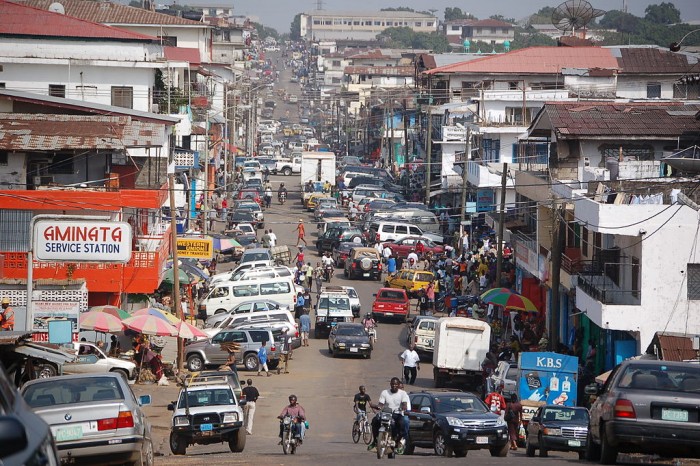
In less than a year about 180 000 people in Harper, Liberia will see construction begin on their own hospital. Harper is the coastal town where North American freed slaves first settled back in 1883. But because of the need in neighbouring Ivory Coast, as well as the size of the population in this part of the country, the hospital, when completed, is likely to serve more than 530 000 people.
Luckily for architect Christine Lara, leader of the project, designing spaces that respond to the needs of the environment is all in a day's work.
This is because Lara and her team at Partners In Health (PIH) have built similar facilities in Rwanda and Haiti.
“Building the facility is the easy part. It’s actually maintaining it and operating it that’s really hard. That’s what it’s difficult to figure out the finances for. So one thing we’ve learned very quickly is that we need to have and formulate passive design strategies. That means natural ventilation, using the venturi effect in all of the wards,” Christine Lara, the director of infrastructure at Partners In Health in Liberia, says.
“We are using low-technologies and passive design strategies to not only supplement the budget but making sure that the facility offers a comfortable level of climate within the wards. A huge portion of the design is also dedicated to the prevention of infectious disease because that’s a huge factor in hospital design especially in these contexts.”
After two civil wars, many of the buildings in Liberia are in ruins. Hunger, poverty, government corruption and a lack of basic services sharply contrast the tranquillity and natural beauty of the fishing town’s unexploited beaches. While Liberia has been affected with these problems for decades, a new test came in 2014 when an outbreak of Ebola in neighbouring Guinea quickly spread. Over 11 000 Liberians were affected – 4 800 of them died.
Relief organisations flocked to the country as its already weak health care system began to crumble. The emergency response teams were able to help eradicate the virus but now, they’ve left and the country must rebuild.
“The ethos of [Partners In Health] is really: Let’s go where no one else wants to go. Where is the worst possible place for patient care where we can help and support the Ministry of Health in that regard? That’s why we decided to work in the south-east,” says Lara.
Lara cut her teeth with Mass Design Group, an award-winning architecture firm with its head office in Boston, Massachusetts. There, she learned to use the principles of holistic architecture to strengthen environments and provide dignity for the poor and displaced in disadvantaged areas.
In one Partners in Health project, Mass worked with the Rwandan health ministry to construct the Butaro District Hospital in 2008. They’ve since completed a similar project in Haiti. Both builds marry passive design strategies, are adapted to suit the climate and conditions of each area, and offer high-tech facilities where there would otherwise be very little care options.
But setting up shop in Liberia is another challenge altogether. After the relief organisations pulled out of the country, taking their supply chains with them, Lara and her team were called upon by the Liberian health ministry to set up long-term healthcare facilities, starting with clinics, mental health programmes and a recently completed decentralised treatment centre for drug-resistant TB.
“There’s various forms of TB, MDR being one of the most challenging ones to treat. Normally, if patients are MDR positive they have to travel all the way to Monrovia to seek care, which is… if you’re going in the rainy season, by road, it could take you a few days to get there. And often times, it’s too late,” explains Lara. “That’s one [Liberia’s] biggest challenges, making sure patients are treated in ample time with the right services, in the right space. Our part is making sure we have the systems in place to do that.”
But with little conventional resources, the team plan to make headway with alternatives like rammed earth, compressed blocks and rubber wood. “We’ve started building some testing walls for that to see how it reacts in the rainy season because right now we’re in the height of the rainy season and I’m not sure if you know, Liberia has a very very long rainy season that greatly impacts construction and supply chain and the transport of materials,” she explains.
“So we’ve started exploring ways in which we could use the materials that are locally available in order to build. All of the projects that we’re doing, and have done to this point, are really getting us ready for the new hospital which is really the large-scale build.”
She adds: "We’re in a very remote location. There’s nothing here and nothing available. So we’re having to be very innovative with materials that are readily available locally. Fundamentally, for infrastructure, that continues to be our greatest challenge.”






